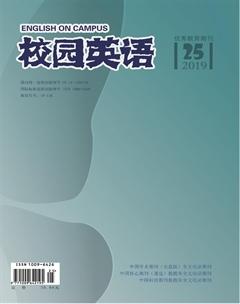Study on Negative Transfer of Sichuan Dialect on English Phonetics Learning
【Abstract】Diversity of regional dialects is great in China.This paper is going to focus on one of the Guanyu dialect——Sichuan dialect. As the mother tongue,the dialect often influences the learners phonetic learning of English.Through recording, this paper aims to analyze the differences between the pronunciation of Sichuan dialect and that of English, looks into the negative transfer of Sichuan dialect on English phonetics learning. And this paper will only focus on monophthong.
【Key words】negative transfer; English; Sichuan dialect; second language acquisition
【作者简介】朱梦琪,华中师范大学外国语学院英语翻译系。
1. Literature Review
1.1 Second Language Acquisition
The term “second language acquisition” refers to the subconscious or conscious processes by which a language other than the mother tongue is learned in a natural or a tutored setting. It covers the development of phonology,lexis,grammar,and pragmatic knowledge,but has been largely confined to morphosyntax. The process manifests both variable and invariable features. (Ellis R 1999)
1.2 Language Transfer
Transfer can be positive or negative. It is apparent that for any two languages,there are similar patterns as well as different ones in their phonological,lexical,and grammatical systems.Negative transfer,a process more commonly known as interference,occurs when an L1 pattern is different from a target language pattern,which may lead to errors or inappropriate forms in the target language.(何舉纯&陈佑林 2018)

2. Research Design
There are 13 subjects ( 7 male and 6 female) for the questionnaire and 19 subjects (10 male and 9 female) for the sound recording project. All the subjects are from Sichuan province. Their first language is Sichuan dialect and the second language is English.
3. Results and Analyses
Most of subjects have difficulties to pronounce monophthong.In RP,traditionally a vowel is depicted in terms of four basic dimensions:the length(short-long),the horizontal height of the tongue(front-back),the vertical height(close-open)and lip rounding. The horizontal height is roughly equal to which part of the tongue is raised. It distinguishes mainly three dimensions:”front”, “central” and “back”. And the vertical height is divided into four categories: “close”,“half-close”, “half-open” and “open”. From an articulatory point of view,the correspond to different degrees of mouth opening.(周睿丰 2009)
A close vowel means the mouth opens very little; a half-close vowel indicates the mouth opens more; a half-open shows the mouth half open and a open vowel shows the mouth open widely. Whats more,a front vowel means you must put your tongue behind your lower teeth and raise the front of your tongue towards your hard palate. A central vowel means you have to raise the middle of your tongue towards your hard palate. A back vowel shows you need to raise you tongue up.(周睿丰 2009)
Whereas in Sichuan dialect , there are no distinct differences between vertical height. (1)When Sichuanese pronounce / i /,they raise their tongues high and front and open their mouths very little ,which is same as the pronunciation of the long vowel / i :/;(2)and when they pronounce / u /,their tongues are high and back and their mouths open also very little like the sound / u: /; (3)the pronunciations of /?:/ and /?/ are similar.;(4)and the sounds of /?/ and /?:/ are missing in Sichuan dialect.(5)/?/ is a short open front unrounded vowel with wide open mouth which is hard to find the corresponding sound in Sichuan dialect.(周睿豐 2009)(6) You can produce the sound /?/ by first saying /?/,then retracting the tongue a little. Due to the missing of /?/,and /?/ still cant find in Sichuan dialect.
To summarize,in Sichuan dialect,the distinction of monophthong mainly reflect in the length and horizontal height. Sichuanese always use the sounds / i /,/ u /,/?/, /?/ to replace / i: /,/ u :/,/?:/,/?:/ in English. The only difference is the length. And due to the missing of the sound /?/ and /?/ , /ɑ/ is used to replace.
参考文献:
[1]Ellis R. Understanding second language acquisition[M]. Oxford; New York:Oxford University Press,1999.
[2]周睿丰.语音学教程[M].华中师范大学出版社,2009.

